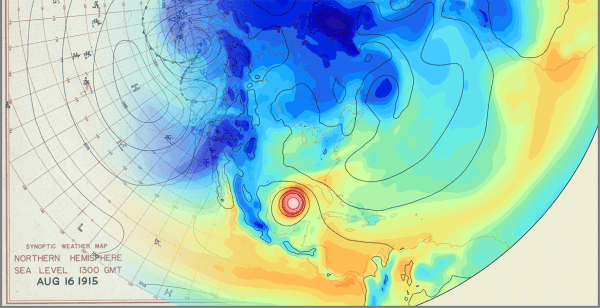It’s been the stuff of science fiction for generations: a time machine that would allow researchers to reach back into yesteryear and ask new questions about long-ago events.
This month, a NOAA-funded research team published an update to a weather “time machine” they’ve been developing since 2011. This third version of the 20th Century Reanalysis Project, or 20CRv3 for short, is a dauntingly complex, high-resolution, four-dimensional reconstruction of the global climate that estimates what the weather was for every day back to 1836.
The newest update provides continuous estimates of the most likely state of the global atmosphere’s weather on 75-kilometer grids eight times a day for the past 180 years. It’s the scientific fruit of an international effort led by researchers with NOAA's Physical Sciences Division (PSD) and CIRES and supported by the Department of Energy.
The research opportunities that this work makes available are almost boundless, said Gil Compo, a CIRES scientist working at NOAA who leads the reanalysis project. “We’re throwing open the door to lost history, and inviting scientists to pour through,” Compo
Continue reading at NOAA.
Image via NOAA.


